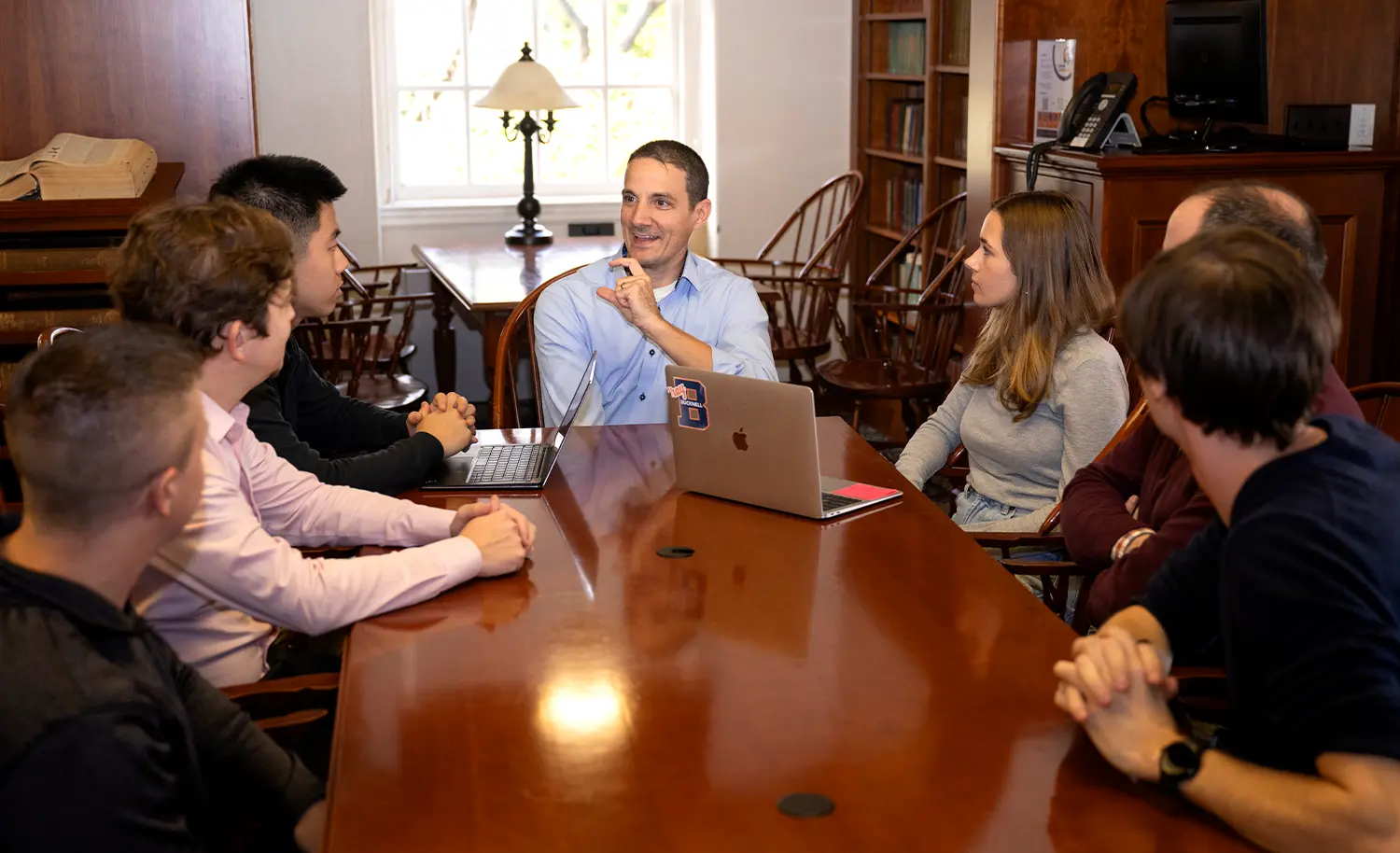

How a cross-college team of students and faculty partnered with staff to solve one of the University’s biggest puzzles

Photo: Emily Paine
The Problem
The Project
Smart Scheduling
Spring 2023
Spring 2024*
In 2023, Stanley Gai ’25, business analytics and sociology, created a dashboard illustrating enrollment data, which Pellegrini used to refine the fall semester schedule. Clara Chaplin ’25, mathematics and computer science, and Tsugunobu Miyake ’25, computer science & engineering, developed a mathematical model and programmed a user interface that generates schedules with minimal inconveniences.
To develop the spring 2024 schedule, Pellegrini used the computer-generated sample schedules as his starting point, which accelerated the process; he estimates it saved him several weeks of work on exam scheduling. He then applied his insights about campus dynamics and factors not easily quantifiable by data alone. “Vince is the one who ultimately knows the nuances we can’t program or predict,” Miyake says. Inconveniences will never be entirely eliminated; human expertise will ensure the schedule runs smoothly.